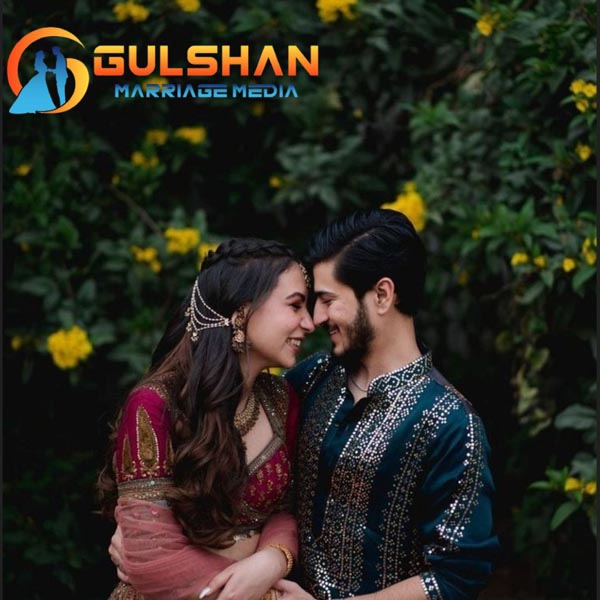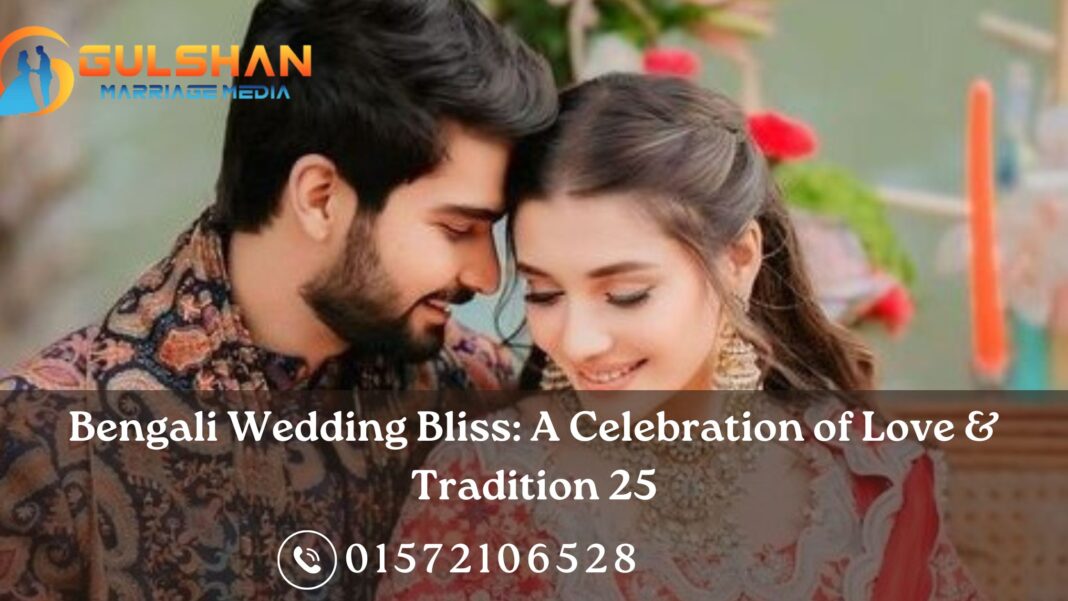Bengali Wedding Bliss: A Celebration of Love & Tradition 25

Bengali wedding is not just the union of two souls; it is a grand celebration of love, culture, and traditions passed down for generations. Rooted in rich customs and vibrant rituals, a Bengali wedding is an exquisite blend of spirituality, family bonding, and joyous festivities. The colorful ceremonies, melodious music, sumptuous feasts, and deep emotional connections make it a truly magical event.
Bengali weddings, also known as Biye, are deeply embedded in traditional values yet have evolved to embrace modern influences. Every step is filled with significance and meaning, from the pre-wedding rituals to the post-wedding celebrations. This article delves into the various phases of a Bengali wedding, highlighting its unique aspects and timeless charm.
Pre-Wedding Rituals: A Prelude to the Grand Celebration
Before the actual wedding day, several pre-wedding ceremonies set the stage for the grand affair. These rituals symbolize the sanctity of marriage and create a bond between the two families.
-
Ashirbaad (Blessing Ceremony)
The Ashirbaad ceremony is when the elders of the groom’s family visit the bride’s home and bless her with gold ornaments, clothes, and sweets. Similarly, the bride’s family blesses the groom. This ritual is a formal acceptance of the union and marks the beginning of the wedding festivities.
-
Aiburobhaat (Bachelor/Bachelorette Feast)
A day before the wedding, both the bride and groom are treated to a lavish meal by their families. This meal includes traditional Bengali delicacies such as rice, fish, meat, dal, and sweets. It is considered the last meal they have as unmarried individuals, symbolizing the transition into married life.
-
Gaye Holud (Haldi Ceremony)
The Gaye Holud or turmeric ceremony is a joyous pre-wedding event where turmeric paste is applied to the bride and groom to purify and bless them with glowing skin. This ceremony is filled with laughter, music, and dance, making it one of the most enjoyable parts of a Bengali wedding. The bride and groom are dressed in yellow, and their families exchange turmeric paste to apply on each other, symbolizing unity.
The Wedding Day: A Sacred Union
The Bengali wedding day is an elaborate affair filled with sacred rituals, grandeur, and deep emotions. Each ceremony holds a special significance in strengthening the bond between the bride and groom.
-
Bor Jatri (The Groom’s Procession)
The groom, dressed in a traditional Panjabi and Dhoti, arrives at the wedding venue with his family and friends, known as the Bor Jatri. The journey to the venue is often accompanied by music, dancing, and celebrations. Upon arrival, the bride’s family warmly welcomes the groom with traditional rituals.
-
Saat Paak (The Seven Circles)
The bride, dressed in a stunning red Banarasi saree, sits on a wooden Piri (small stool). With the help of her brothers, she circles the groom seven times while covering her face with betel leaves. This ritual, known as Saat Paak, signifies their eternal bond and the sacredness of their union.
-
Shubho Drishti (The First Look)
One of the most enchanting moments in a Bengali wedding is the Shubho Drishti, where the bride finally removes the betel leaves and looks at the groom for the first time during the ceremony. This moment is often accompanied by the blowing of Shankh (conch shells) and Ululation, creating an auspicious atmosphere.Shubho Drishti, meaning “auspicious sight,” is one of the most significant and beautiful moments in a traditional Bengali wedding. This ritual symbolizes the first sacred glance exchanged between the bride and groom, marking the beginning of their marital journey. Rooted in tradition and cultural significance, Shubho Drishti continues to be a cherished part of Bengali weddings, even as modern influences shape wedding ceremonies today.

The Significance of Shubho Drishti
In Bengali weddings, marriages are not just a union of two individuals but also a coming together of two families. Shubho Drishti represents the moment when the bride and groom officially acknowledge each other as partners in the presence of family, friends, and deities. It is believed that their first glance brings divine blessings, ensuring a happy and prosperous married life.
The Traditional Ritual
Shubho Drishti takes place after the bride’s grand entrance. The bride, adorned in a traditional red Banarasi saree with intricate gold jewelry, is seated on a wooden platform called the piri. Her face is partially covered with betel leaves, symbolizing modesty and anticipation. As the ritual begins, the groom, dressed in a traditional dhoti-kurta and topor (a conical headgear), eagerly awaits the moment when the bride reveals her face.
The bride is lifted by her brothers or close male relatives and is carried around the groom seven times. This represents the seven sacred promises of marriage. As she completes the final round, she slowly lowers the betel leaves and looks into the groom’s eyes for the first time in the ceremony. This moment is greeted with cheers, conch shell sounds (shankha), and ululation (a celebratory sound made by women). The entire atmosphere is filled with joy and blessings.
Modern Adaptations
While the essence of Shubho Drishti remains unchanged, modern Bengali weddings have added creative elements to this ritual. Some couples incorporate dramatic lighting, floral showers, or even background music to enhance the experience. Professional photographers and videographers capture the moment with cinematic effects, making it even more memorable.
Additionally, in some contemporary weddings, the ritual is followed by an exchange of smiles, whispered words, or even a light-hearted laugh, making it more personal and intimate. Some couples also modify the ritual to include mutual gestures of acceptance, like a small gift exchange or a personalized vow.
Shubho Drishti is more than just a ritual; it is a powerful symbol of love, respect, and new beginnings. Whether celebrated in a traditional or modern way, it remains a timeless and magical moment in every Bengali wedding, bringing together culture, romance, and spirituality.
-
Mala Bodol (Exchange of Garlands)
Following the Shubho Drishti, the couple exchanges flower garlands, known as Mala Bodol, signifying their acceptance of each other. The moment is often filled with playful teasing as the families lift the bride and groom, making it a challenge for them to exchange garlands.
-
Sampradan (Giving Away of the Bride)
In this emotional ritual, the bride’s father or elder guardian places the bride’s hand in the groom’s hand, entrusting her to him. This marks the official transfer of responsibility and signifies the sacredness of their new relationship.
-
Yagna and Saptapadi (Sacred Fire & Seven Steps)
The couple sits in front of the sacred fire (Yagna), chanting Vedic hymns as priests conduct the wedding rituals. They then take seven symbolic steps around the fire, making lifelong promises to each other. Each step represents a vow of love, trust, and mutual respect.
-
Sindoor Daan and Ghomta (Vermilion Application & Veil)
The wedding concludes with the groom applying Sindoor (vermilion) on the bride’s forehead, signifying her transition into a married woman. She then covers her head with a saree, known as Ghomta, completing the sacred wedding rites.
Post-Wedding Rituals: Bidding Farewell and New Beginnings
Even after the main wedding ceremony, several significant post-wedding rituals mark the beginning of the couple’s journey together.
-
Bidaai (Bride’s Farewell)
The Bidaai is an emotional moment when the bride bids farewell to her family and leaves for her new home. She throws rice over her shoulder, symbolizing that she is repaying her parents for their love and care. It is a heartfelt moment filled with tears, blessings, and new hopes.
-
Bou Boron (Welcoming the Bride)
Upon arriving at her new home, the bride is warmly welcomed by her in-laws in a ritual called Bou Boron. She steps into a plate filled with milk and Alta (red dye) and imprints her footsteps on white cloth, symbolizing prosperity and happiness in her new home.
-
Bou Bhat (Bride’s First Meal)
On the day after the wedding, the bride prepares and serves food to her in-laws for the first time, symbolizing her acceptance into the family. In return, she is showered with gifts from her new family, marking the start of her married life.
-
Reception (Wedding Feast)
A grand reception is held in honor of the newlyweds, hosted by the groom’s family. Friends, relatives, and well-wishers gather to celebrate the couple’s union with music, dance, and a delicious Bengali feast, featuring delicacies like Shorshe Ilish, Chingri Malai Curry, Pulao, and an array of sweets.
Modern Influences on Bengali Weddings
While traditional Bengali weddings have remained largely unchanged, modern elements have also found their way into the celebrations. Destination weddings, themed decorations, designer bridal attire, and personalized wedding invitations are now common. The use of wedding planners, photographers, and choreographed dance performances has added a touch of contemporary elegance while keeping the essence of tradition alive.
Bengali weddings have long been a celebration of rich traditions, cultural heritage, and deep-rooted rituals. However, in recent years, modern influences have significantly shaped the way these weddings are conducted. From contemporary fashion trends to digital advancements, Bengali weddings today are a beautiful blend of tradition and modernity.
Influence of Fashion and Attire
One of the most noticeable modern influences on Bengali weddings is in fashion. While traditional attire such as the red Banarasi saree for the bride and dhoti-kurta for the groom remains popular, modern variations have emerged. Brides now opt for designer lehengas or sarees in unconventional colors like pastels, gold, and ivory. Grooms have also embraced Indo-Western outfits, blending traditional dhotis with sherwanis or even suits. The concept of theme-based wedding attire has also gained popularity, with coordinated outfits for the bride, groom, and family members.
Digitalization and Social Media Impact
The rise of social media has revolutionized Bengali weddings. Couples now create wedding websites, digital invitations, and social media hashtags to document their journey. Wedding photography and cinematography have also evolved, with pre-wedding shoots, candid photography, and drone videography becoming an integral part of celebrations. Social media platforms like Instagram and Facebook allow couples to share their wedding moments in real time, making the event more interactive and memorable.
Fusion of Rituals and Personalization
While traditional Bengali wedding rituals such as Gaye Holud (Haldi ceremony), Saptapadi (seven steps around the fire), and Sindoor Daan (vermilion application) remain intact, couples often personalize these ceremonies. Many include modern elements like personalized vows, live music performances, and destination weddings. Some even integrate influences from other cultures, such as Western-style receptions with buffet dinners and dance performances.
Catering and Food Trends
Food has always been a central part of Bengali weddings, with an elaborate spread of fish, mutton, and sweets like Rosogolla and Mishti Doi. However, modern Bengali weddings now feature multi-cuisine menus, including Italian, Chinese, and Continental dishes. Live food counters and customized desserts have also become a trend, catering to diverse tastes and preferences.
Eco-Friendly and Minimalistic Weddings
Another modern influence is the rise of sustainable and minimalistic weddings. Many couples opt for eco-friendly decorations, biodegradable cutlery, and simple yet elegant venues to reduce waste. This shift aligns with global trends of conscious celebrations while maintaining cultural significance.
Overall, modern influences have added a fresh charm to Bengali weddings, making them more personalized, inclusive, and grand while preserving their traditional essence.
Conclusion
A Bengali wedding is more than just a marriage ceremony—it is a grand celebration of love, culture, and familial bonds. The intricate rituals, vibrant traditions, and heartfelt emotions make it an unforgettable event. Despite modern influences, the essence of Bengali weddings remains deeply rooted in age-old customs, creating a perfect blend of tradition and contemporary charm.
With its rich heritage and joyous spirit, a Bengali wedding truly exemplifies the blissful union of two souls, making it one of the most beautiful wedding traditions in the world.

























wqr6w1